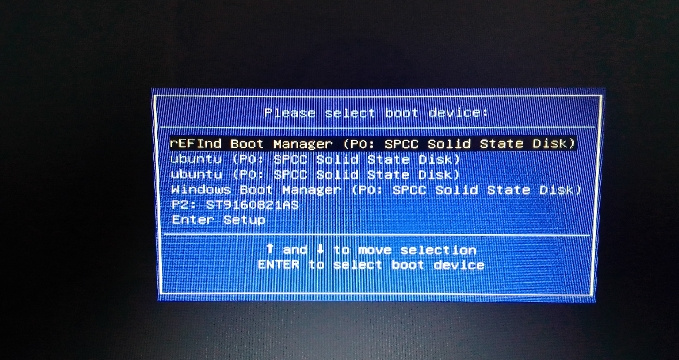Answer the question
In order to leave comments, you need to log in
How to install ubuntu from windows so that grub doesn't reset?
I recently bought a laptop: https://www.ozon.ru/context/detail/id/179266530/ .
Installed on top of Windows 10 Ubuntu v20.04. After a recent Windows update, grub stopped loading. I tried to update according to this instruction https://www.goubuntu.ru/kak-vosstanovit-grub-after... , it didn't work. The problem of not confirming the operation of reinstalling grub 2 popped up.
As a result, I decided to demolish everything and reinstall it.
Using this instruction, having reached the disk partitions, I have a completely different picture. I can't figure out how to distribute partitions under ubuntu. There is /dev/sda, and I have /dev/nvme0n1. Plus, the separation is different when Windows is installed (on the pikcha).

How can I partition a disk? I tried by analogy as they have, it seems to have been installed without errors. But after installation, the hornbeam does not start, Windows loads immediately. Restoring the hornbeam didn't help either.
UPD : previously installed without manual disk partitioning. Now, by the way, I tried the same thing. Still doesn't load.
Answer the question
In order to leave comments, you need to log in
PS I apologize for not commenting on the answers for a long time. I don't know what happened, but my problem was not completely solved then. All I did was reinstall Windows from scratch, then ubuntu and just by pressing f11 (windows restorer) you can choose to boot there and start ubuntu from there. But at the same time, after a couple of weeks, the problem was magically solved - the grub bootloader suddenly began to appear. At what I didn’t even update Windows before that (although it might have imperceptibly been updated somehow). I don’t even know what to think, it’s unlikely that it will be useful to anyone, but in any case, thanks to everyone.
I recommend installing rEFInd - it will find all the systems on the disks and save you a lot of problems!
Try pressing esc, F1, F9, F10, F1, etc, when starting the PC, a menu may appear in which you can choose where to boot from:

Or select in the BIOS:

PS: You most likely have a different BIOS, but the meaning is the same.
First you need to know the name of the partition where Ubuntu was installed, i.e. "/" directory
When restoring the hornbeam, go to the advanced option and select "OS to boot by default" nvme0n1p_number / directories
also try to select nvme in the Replace Grub into menu or try other options.
Didn't find what you were looking for?
Ask your questionAsk a Question
731 491 924 answers to any question